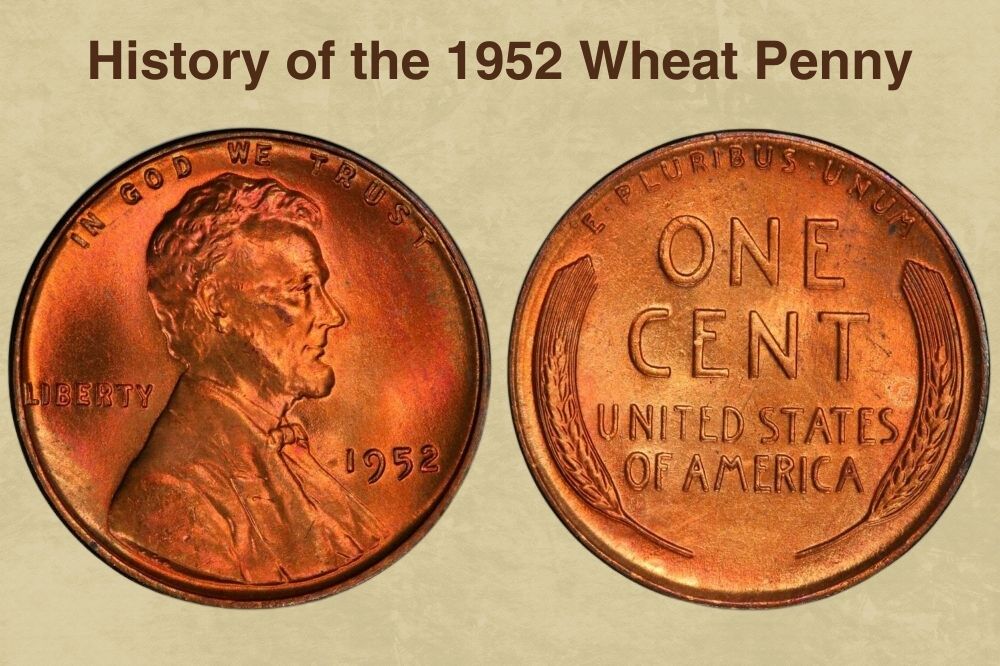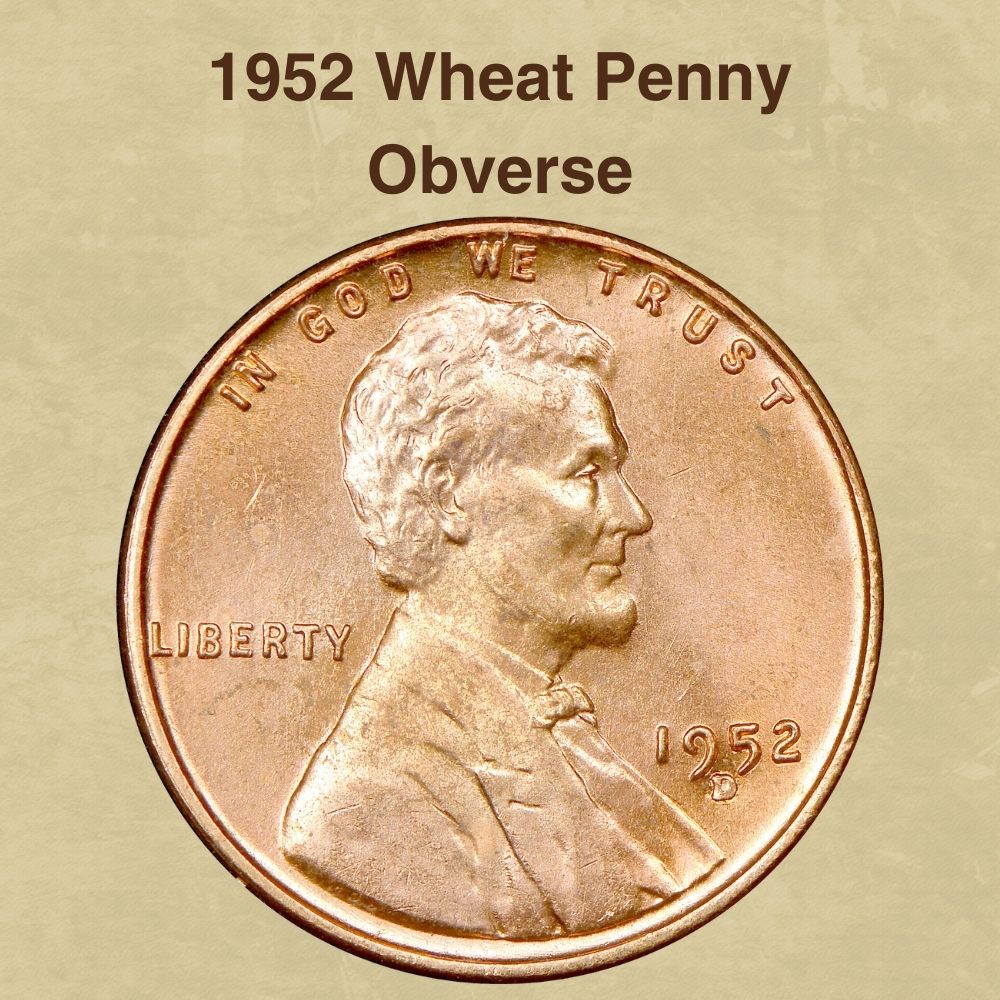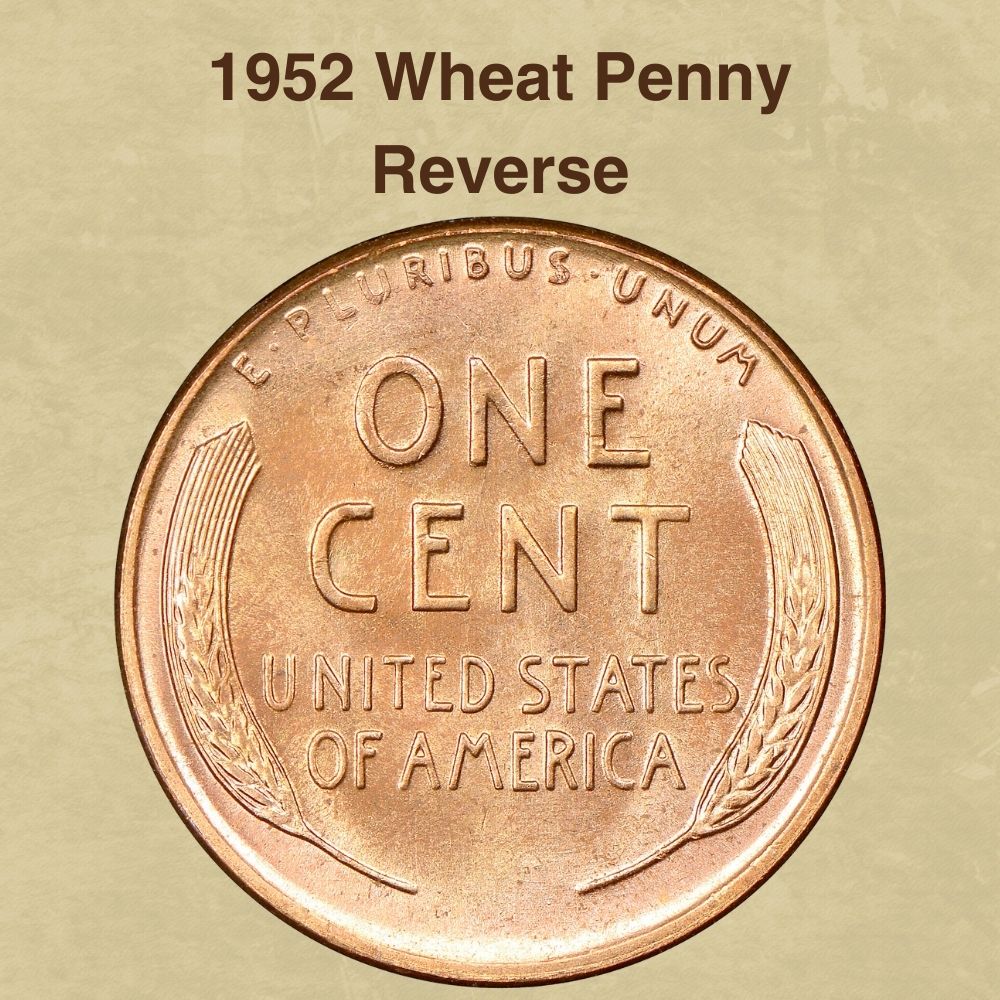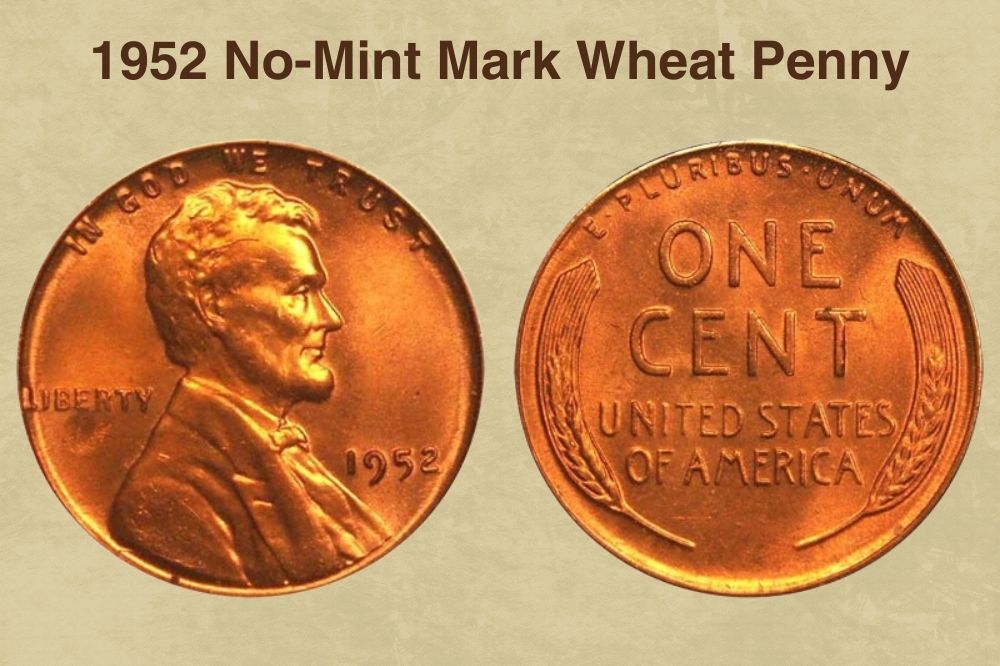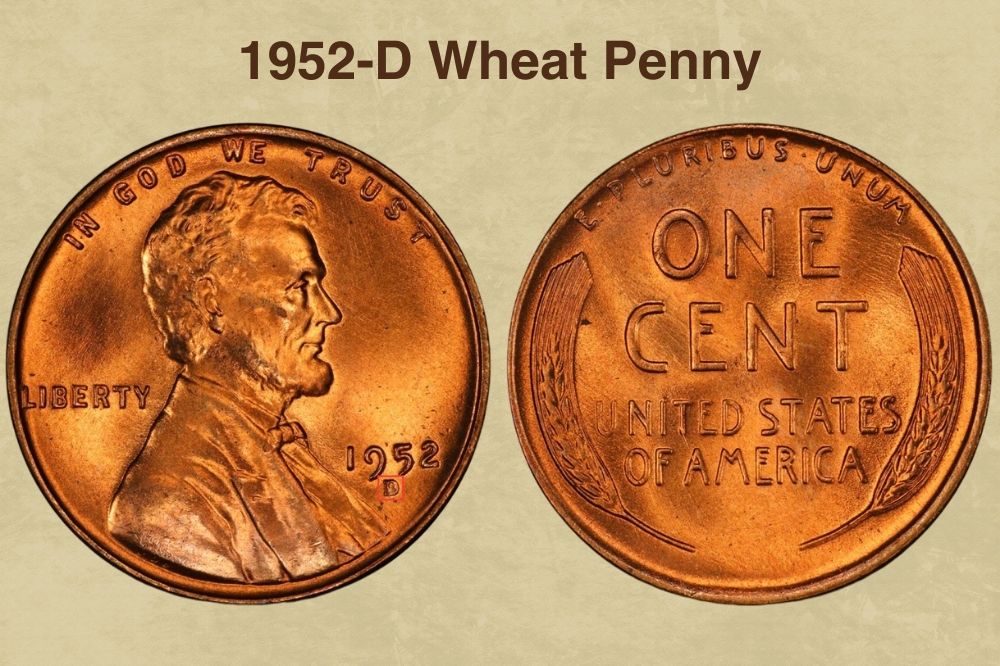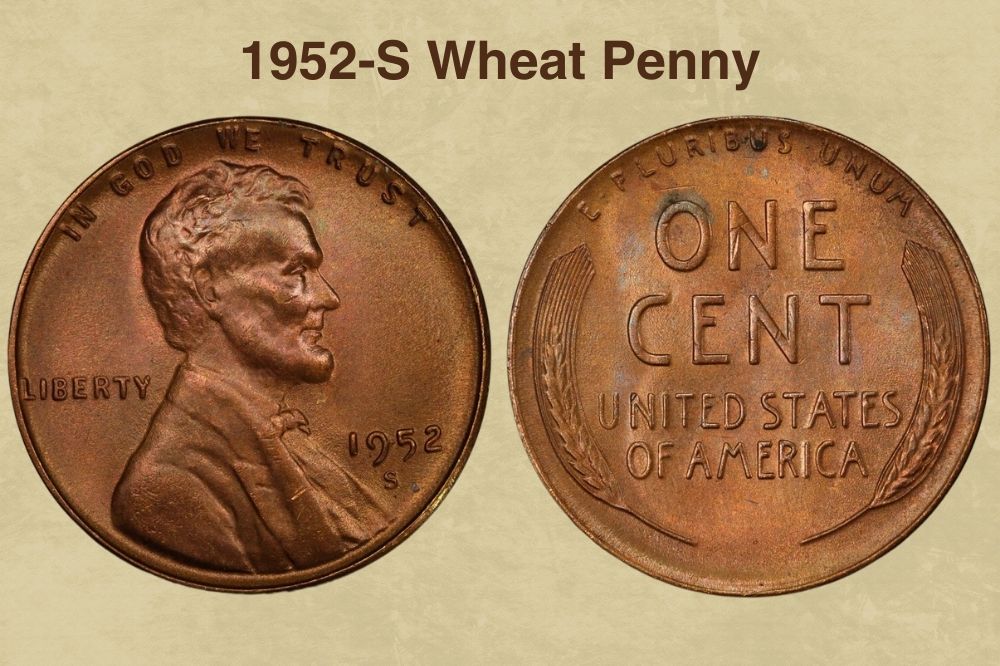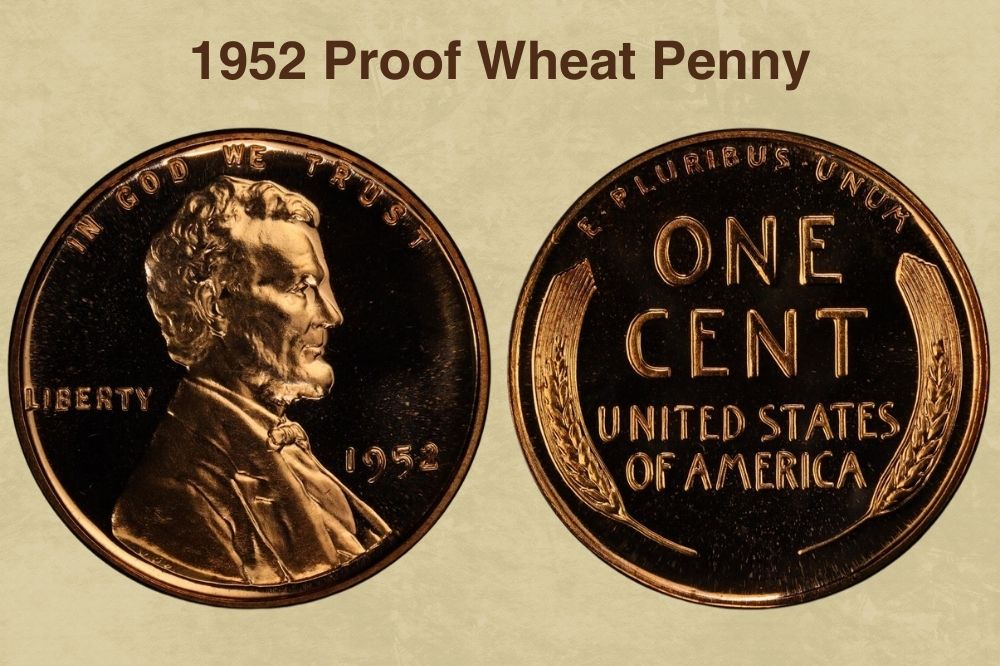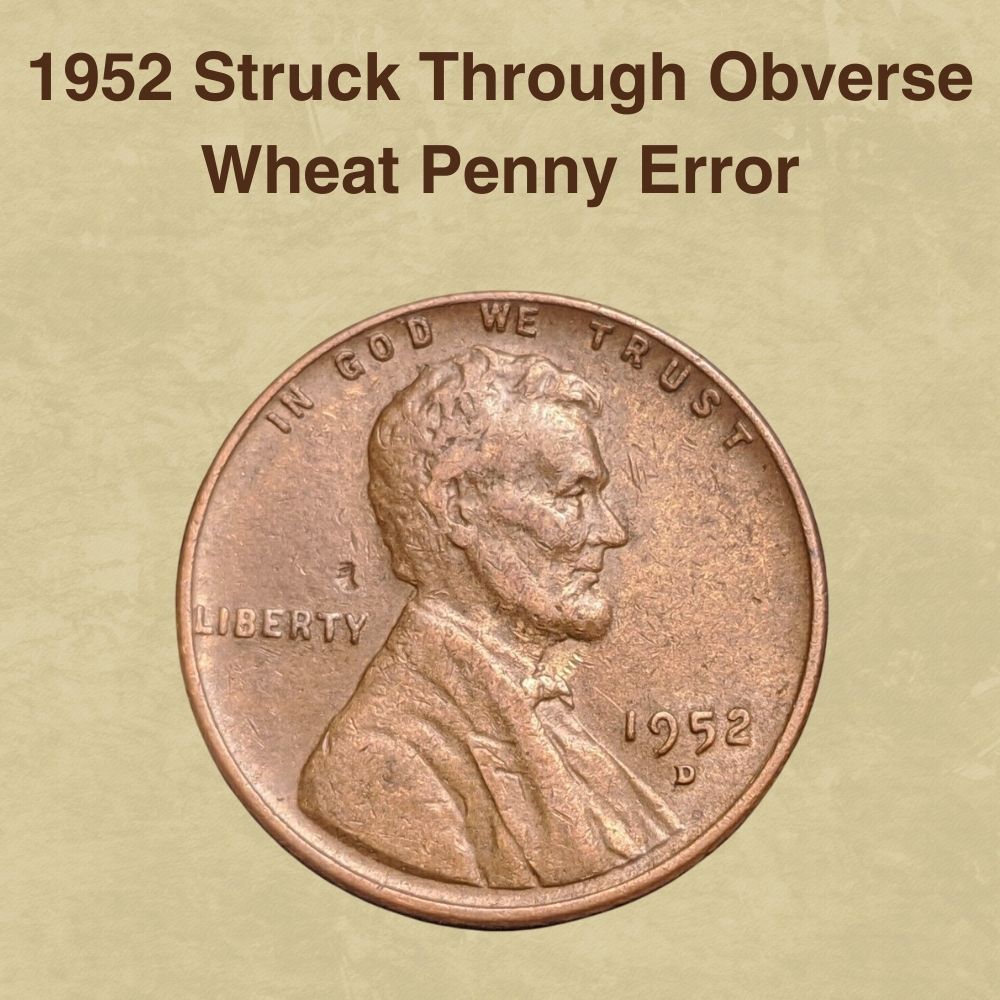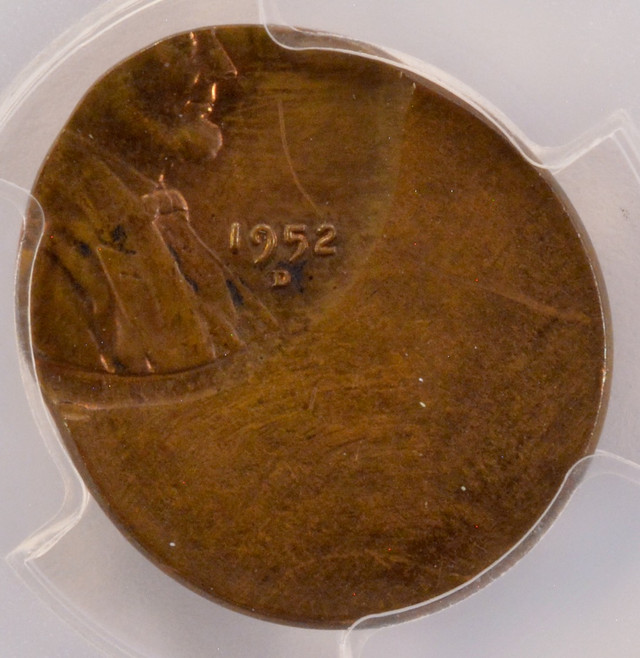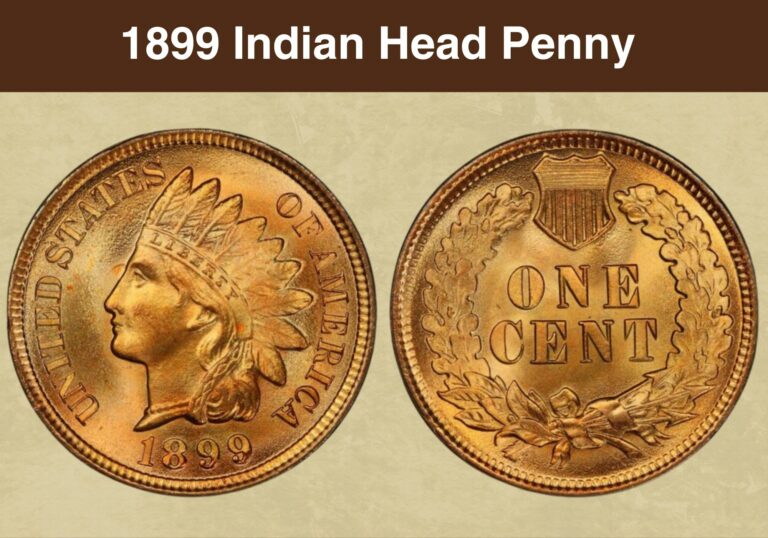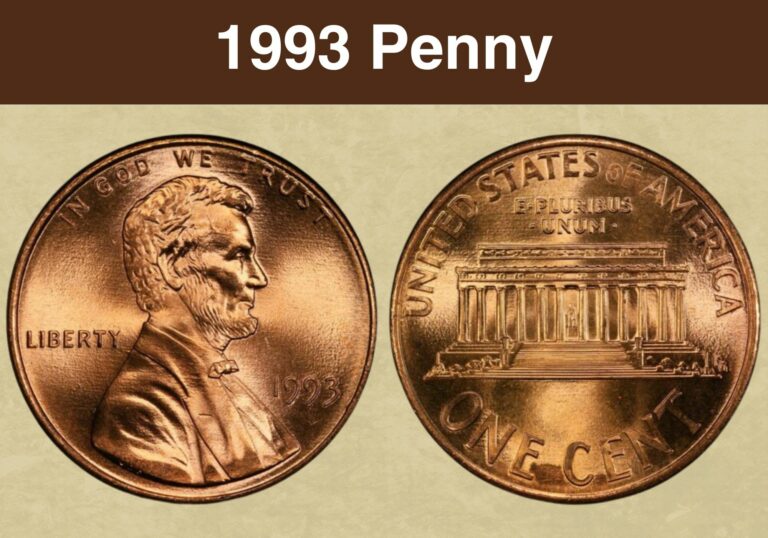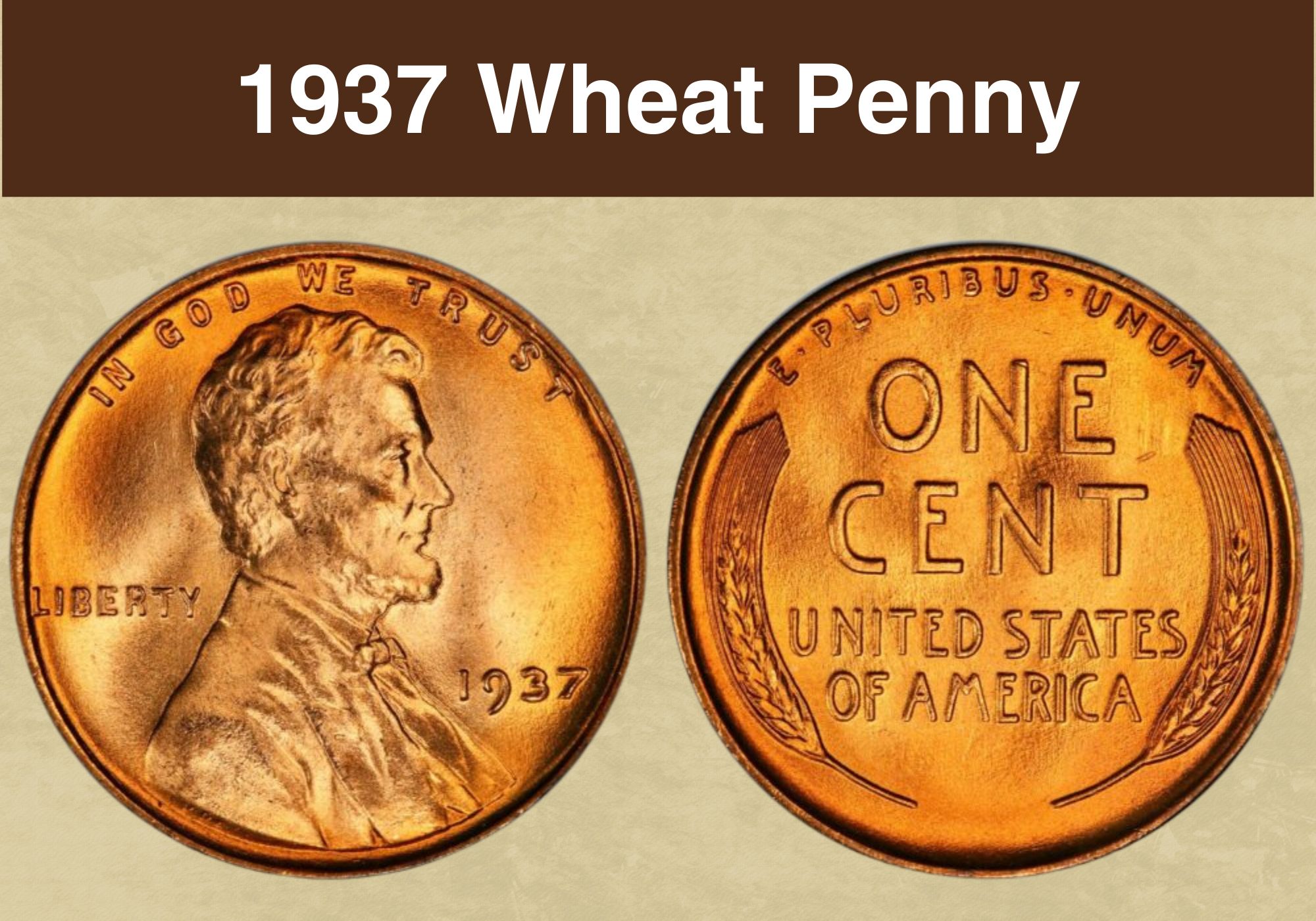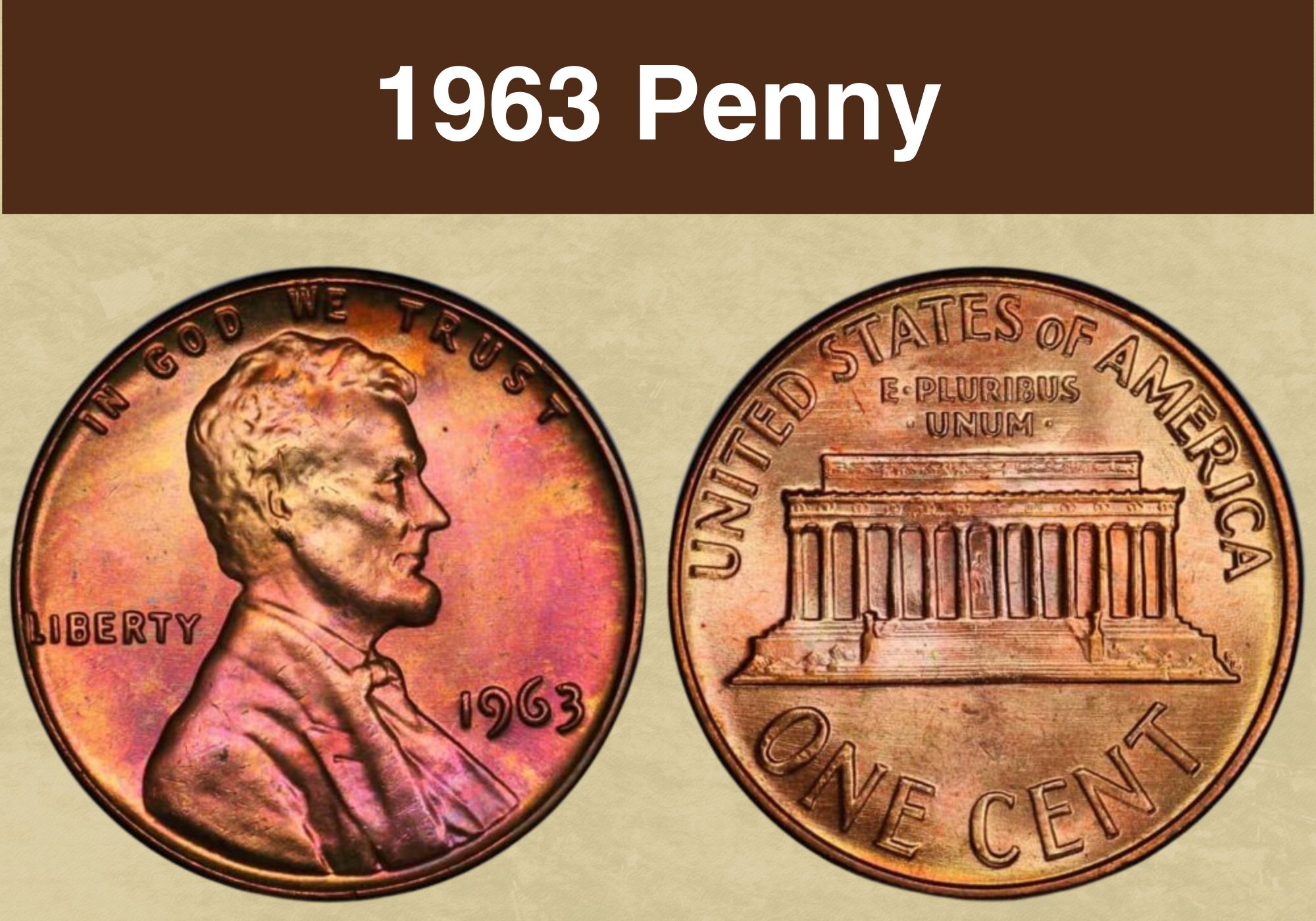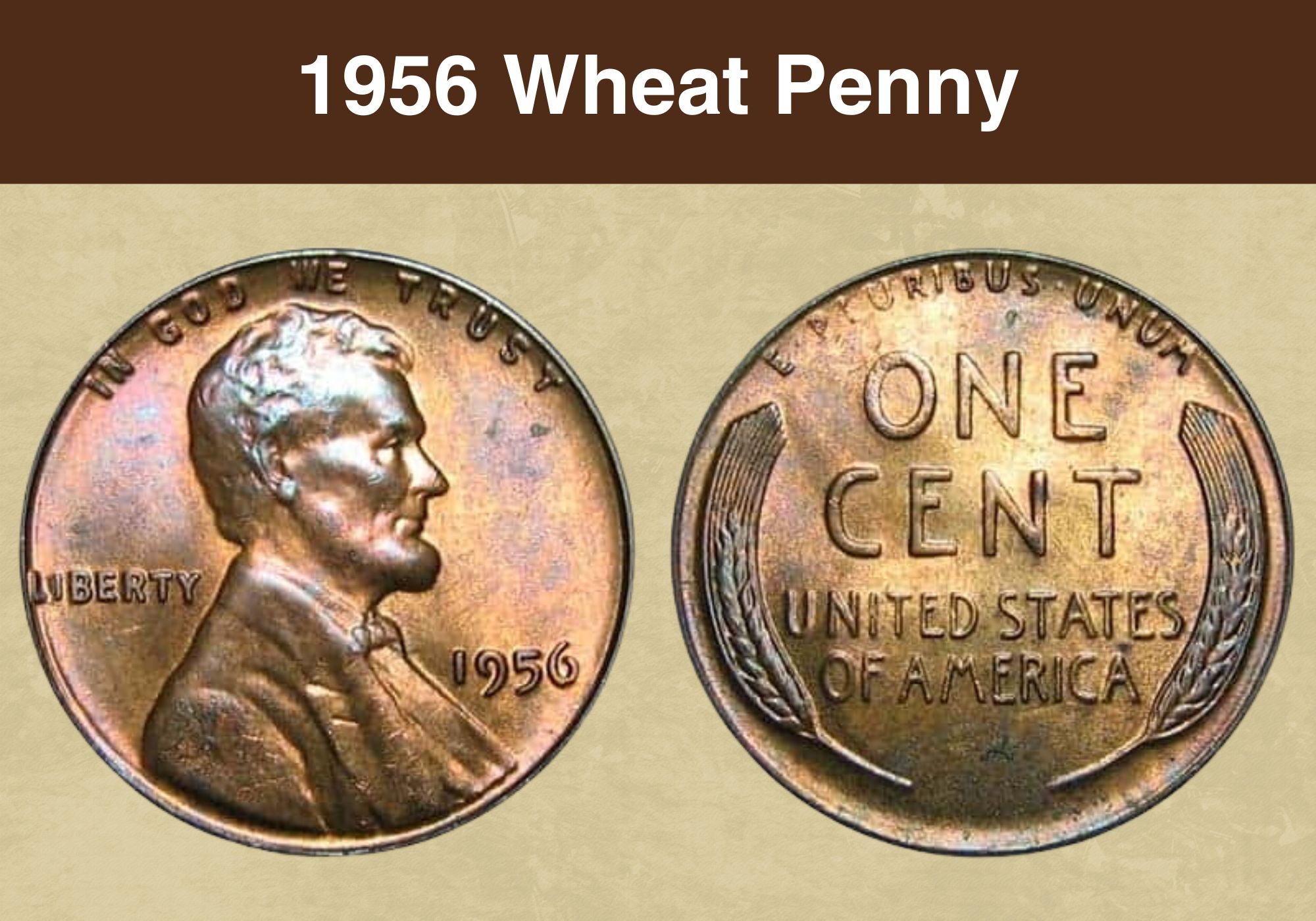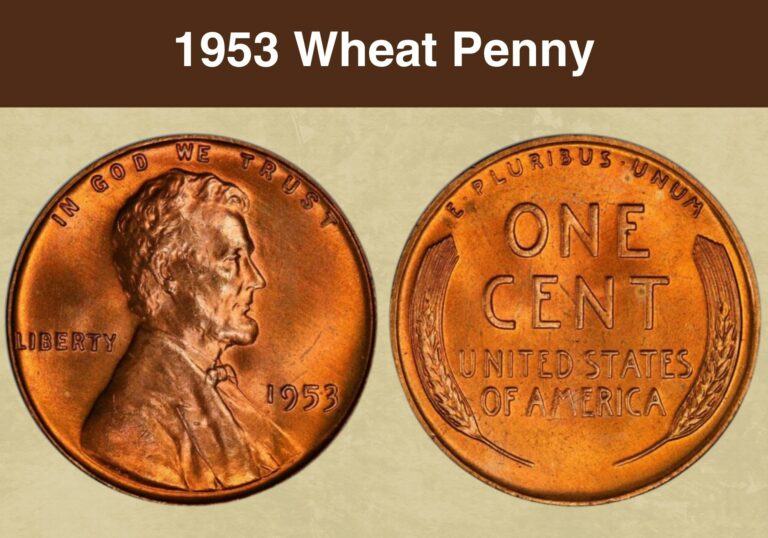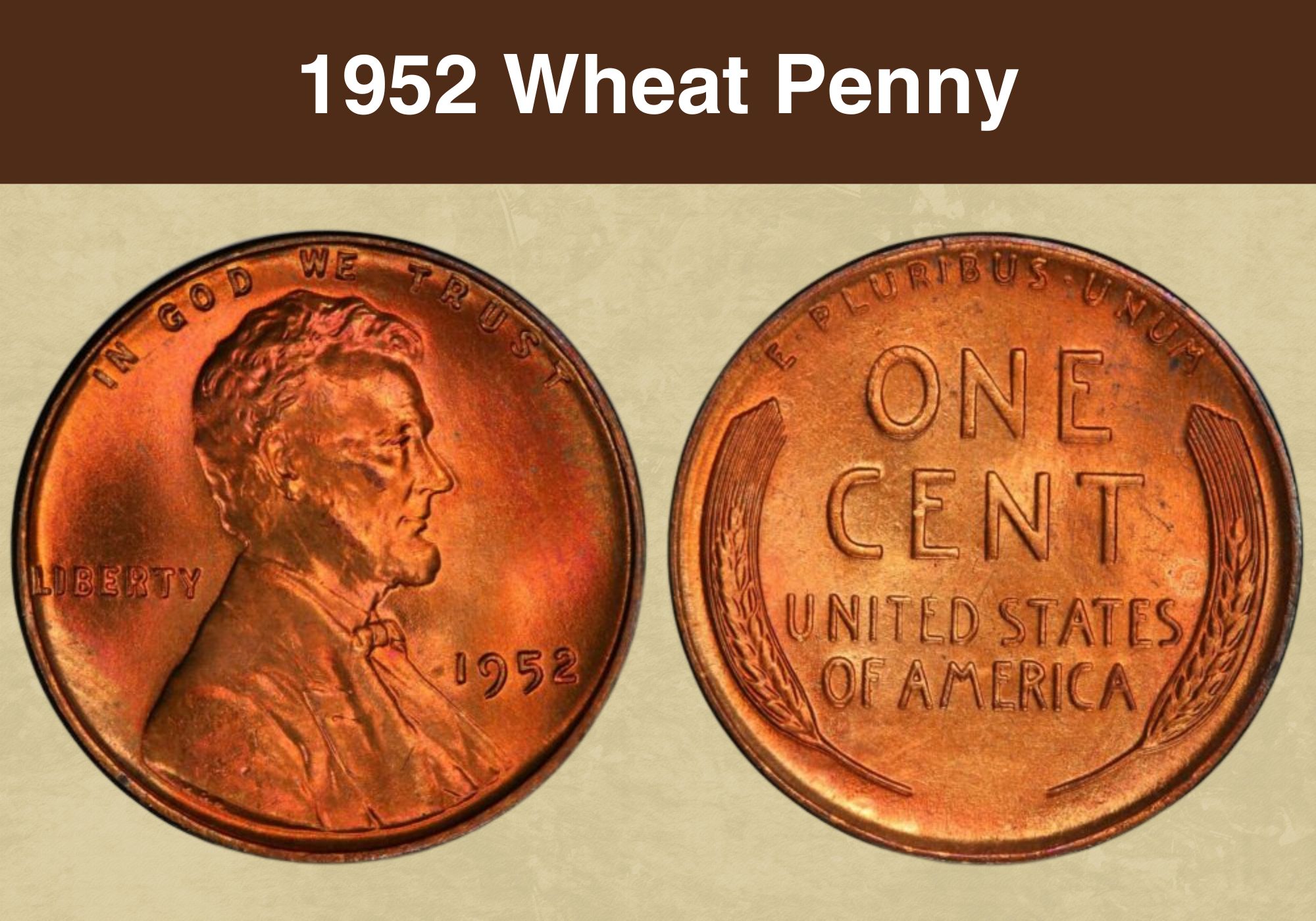
Coin Value Contents Table
- 1952 Wheat Penny Value Chart
- History of the 1952 Wheat Penny
- Features of the 1952 Wheat Penny
- 1952 Wheat Penny Grading Guides
- 1952 Wheat Penny Value Guides
- 1952 No-Mint Mark Wheat Penny Value
- 1952-D Wheat Penny Value
- 1952-S Wheat Penny Value
- 1952 Proof Wheat Penny Value
- Rare 1952 Wheat Penny Errors List
- Where to Sell Your 1952 Wheat penny ?
- FAQ
Are you curious how much a 1952 wheat penny is?
Being a relatively old coin, one might think this wheat penny is worth a premium.
The truth is, the 1952 wheat penny value will mostly depend on its condition. Other factors, such as rarity and the presence of errors, can also influence the coin’s value.
The 1952 wheat penny can be an excellent addition to your 1950s Lincoln penny set. Considering these coins’ affordability, you can easily complete your collection without breaking the bank.
This guide explains everything you need to know about how much your 1952 wheat penny is worth.
We’ll review the coin’s interesting history and features, grading tips, and errors that can fetch a handsome amount.
So, without further ado, let’s jump in and find out the 1952 wheat penny value.
1952 Wheat Penny Value Chart |
||||
| Mint Mark | Good | Fine | Extremely Fine | Uncirculated |
| 1952 No-Mint Mark Wheat Penny Value | $0.05 | $0.05 | $0.10 | $12.50 |
| 1952 Proof Wheat Penny | – | – | – | $12.50 |
| 1952-D Wheat Penny Value | $0.05 | $0.05 | $0.10 | $2,750 |
| 1952-S Wheat Penny Value | $0.05 | $0.05 | $0.10 | $12.50 |
History of the 1952 Wheat Penny
The 1952 wheat penny belongs to the Lincoln cent coin series, first struck in 1909.
The Lincoln cent, also known as the Lincoln penny, replaced the Indian Head cent, becoming the first U.S. coin to feature the portrait of a real person, more so, a president.
The idea of placing the portrait of a real person on a coin was definitely a big break from tradition. Such an idea had historically been considered monarchical and generally contrary to American values.
President Theodore Roosevelt was instrumental in introducing a Lincoln cent into American coinage. In 1904, he engaged the Treasury and United States Mint with a suggestion to redesign the four gold coins and the Indian head cent.
The Mint commissioned a private artist, Augustus Saint-Gaudens to design the five coins. Although he successfully completed the designs for the four gold coins, Augustus died from cancer in 1907 before he could submit a final design for the cent.
By 1908, with the completion of the design of the four gold coins, Roosevelt revisited the cent. President Abraham Lincoln’s 100th birthday anniversary celebration occurring in February 1909 was on the horizon, and Roosevelt thought it fit to commemorate the slain, popular president on a coin.
On the president’s instructions, the Mint commissioned sculptor Victor David Brenner to take over from Saint-Gaudens to complete the redesign of the cent.
Brenner designed a simple obverse featuring Abraham ‘’Abe’’ Lincoln and an equally minimalistic reverse design featuring two wheat years, thus the name Wheat Penny/Cent.
The Mint struck the wheat penny between 1909 and 1959. This coin was originally struck in copper until 1982 when the high copper prices forced a change in composition to a zinc core and a copper-clad layer.
The wheat penny design was replaced by the Lincoln Memorial, which sculptor Frank Gasparro designed for Abraham Lincoln’s 150th birth anniversary.
Features of the 1952 Wheat Penny
Let’s now look at the features of the 1952 wheat penny. Knowing these features can help you identify wheat pennies worth money.
The Obverse of the 1952 Wheat Penny
Lincoln’s right-facing portrait occupies most of the obverse of the 1952 wheat penny.
The country’s motto, IN GOD WE TRUST, appears above his head, at the top along the coin’s inner rim.
The word LIBERTY is shown to the left of Abe’s profile, while the date 1952 is shown to the right.
The Reverse of the 1952 Wheat Penny
The reverse of the 1952 wheat penny is equally simplistic.
Two wheat ears appear on either side of the coin, and the words ONE CENT and UNITED STATES OF AMERICA are set in the center in between the two wheat ears.
Along the inner rim at the top, you will notice the motto, E PLURIBUS UNUM, which means “Out of Many, One.”
Other Features of the 1952 Wheat Penny
In circulated condition, the wheat penny, including those struck in 1952, appears brown or red-brown in color. Uncirculated ones are fully red.
This coin has a plain edge. It measures 19.00 millimetres in diameter and weighs 3.11 grams. Like all wheat pennies, the 1952 Lincoln penny comprises 95% copper and 5% zinc and tin alloy.
In 1952, the mints at Philadelphia, Denver, and San Francisco produced wheat pennies in large numbers. You will notice the mint marks D and S, respectively, on the obverse just below the date.
1952 Wheat Penny Grading Guides
Uncirculated coins are the most desirable when collecting wheat pennies, including those minted in 1952. Uncirculated 1952 wheat pennies will demonstrate exceptional lust, glossy fields, frosted surfaces, and, more importantly, no sign of wear.
Rule out any signs of wear by examining Lincoln’s cheek, beard and the coat’s front edge, which should retain luster.
On the reverse, check for frosted fields, especially on high points such as the lettering ONE CENT and wheat ears. These areas should show continuous luster.
| # | Grade |
|---|---|
| 1 | Basal State-1 |
| 2 | Fair |
| 3 | Very Fair |
| 4, 5, 6 | Good |
| 7, 8, 10 | Very Good |
| 12, 15 | Fine |
| 20, 30 | Very Fine |
| 40 | Extremely Fine |
| 50 | About Uncirculated |
| 60 | Mint State |
| 65 | Mint State |
| 70 | Mint State |
Please check our grading guides to know your coin scale, It’s the necessary step to know the exact value of your coin.
Check out now: How to Grade Lincoln Wheat Penny?
1952 Wheat Penny Value Guides
So, how much is a 1952 wheat penny worth?
The 1952 wheat penny value will depend on several factors, such as the condition.
Newer, uncirculated wheat pennies will fetch you more than circulated and worn examples struck the same year.
Other factors, such as the mint mark, color and rarity, can also affect the value of your wheat penny.
There are four varieties of the 1952 wheat penny whose value we shall explore below. The four varieties include:
- 1952 no-mint mark wheat penny
- 1952-D wheat penny
- 1952-S wheat penny
- 1952 proof wheat penny
1952 No-Mint Mark Wheat Penny Value
The Philadelphia Mint produced 186,775,000 wheat pennies in 1952, most of which are generally well-struck. That said, flawless, blemish-free, no-mint mark wheat pennies can be hard to come by.
Also, although full red examples are plentiful, only a few are graded and certified gem-quality.
In circulated condition, a 1952 no-mint mark wheat penny is worth between $0.05 and $0.35, which is slightly more than the coin’s face value.
Uncirculated examples are extremely affordable, with pieces graded MS66 costing about $12.50. With as little as $2.50, you can get your hands on a nice wheat penny graded MS64.
Full red specimens are worth significantly more. These coins are typically uncirculated and part of hoarded rolls or bags.
Full red 1952 no-mint mark pennies graded MS67 are extremely rare, with the few existing examples fetching up to $7400. The most expensive 1952 wheat penny is graded MS67 and was auctioned for a whopping $9775 in 2007.
1952-D Wheat Penny Value
The Denver Mint recorded the highest mintage in 1952, striking 746,130,000 wheat pennies. These coins are identifiable by their D mint mark on the obverse.
With such a high mintage, you can expect these coins to be plentiful across all grades, including full red specimens.
The other good news is that despite the high mintage, the 1952-D wheat pennies are well-struck with very few if any, errors.
That said, 1952-D wheat pennies are only worth their face value or thereabouts. In circulated condition, you can get your hands on 1952-D wheat pennies for only $0.04 to $0.35.
Mint state examples are equally affordable, with specimens graded MS66 fetching up to $12.50. Full red examples are typically only available in mint state grades and will fetch as much as $7,400.
1952-S Wheat Penny Value
The San Francisco mint struck 137,800,004 wheat pennies in 1952, a fairly high mintage.
These pennies are plentiful across all grades, but most were struck from relatively worn or refinished dies, resulting in a shallow and somewhat faint strike.
Like the Philly and Denver wheat pennies, the 1952-S wheat pennies are only worth more or less their face value. These coins are worth between $0.05 and $0.35 in circulated condition.
Uncirculated examples are equally affordable, with an MS64 costing only $2.50 and an MS66 about $12.50.
Full red specimens are quite valuable but extremely rare. An example graded MS65 will fetch about $19, while a rare MS67 will be worth an eye-watering $3,250.
There is a noticeable price difference across mint state grades due to the rarity; while these pennies are generally plentiful in lower mint states, they are extremely hard to find in higher mint states or gem condition.
1952 Proof Wheat Penny Value
In addition to regular wheat pennies, the Philly Mint produced proof coins for collectors. About 81,980 proof coins were struck in 1952 at the facility.
After the 1951 wheat penny proof coins, the ones struck in 1952 are the hardest to find in cameo and deep cameo.
According to the Professional Coin Grading Service, there are only 150 to 170 known existing examples of Cameo 1952 proof wheat pennies and only ten are graded Deep Cameo.
On average, a 1952 proof wheat penny is worth about $2,750. But a rare, deep cameo specimen graded PF68 was auctioned for an astonishing $64,625 at a 2021 Legend Rare Coin Auctions sale.
Rare 1952 Wheat Penny Errors List
Although 1952 wheat pennies are generally worth only their face value, the presence of minting errors can significantly increase the value of your wheat pennies.
Here are some 1952 wheat pennies worth money:
1952 Doubled Die Obverse Wheat Penny Error
A doubled die obverse error occurs when the striking anvil strikes the planchet twice at a slightly different angle with each strike, doubling the design elements.
The doubled die obverse is a common error among wheat pennies struck in 1952, especially those coming from the Denver facility.
You will notice a doubling on the obverse elements, such as the word LIBERTY and the date. Doubling may also appear on Lincoln’s beard and hair at the top of his head.
Depending on the visibility and extent of doubling, a 1952 wheat penny with a doubled die obverse error can fetch between $100 and $200.
1952 Struck Through Obverse Wheat Penny Error
Struck-through obverse errors are uncommon in the 1952 wheat penny series, so it might be worth some good money when you come across one.
Such an error occurs when a foreign element, such as some grease, a piece of hair, or even dust and debris, comes between the striking anvil and planchet.
When the striking hub strikes the planchet, the foreign element leaves an impression on the coin, creating a strike-through effect.
A 1952 struck-through obverse wheat penny error can be worth up to $100.
1952 Off-Center Strike Wheat Penny Error
An off-center strike error occurs when the planchet is improperly aligned, causing the die to strike the design elements away from the center.
The value of an off-center strike error largely depends on how far away from the center the design element is struck. The greater the distance away from the center, in terms of percentage, the more valuable the coin.
A 1952 wheat penny with a 50% off-center strike error can be worth as much as $200 compared to one with a 5% error that might fetch only about $30.
Where to Sell Your 1952 Wheat penny ?
Now that you know the value of your coins, do you know where to sell those coins online easily? Don’t worry, I’ve compiled a list of these sites, including their introduction, pros, and cons.
Check out now: Best Places To Sell Coins Online (Pros & Cons)
FAQ
How much does a 1952-D wheat penny weigh?
A 1952-D wheat penny comprises 95% copper and a 5% tin and zinc alloy. This relatively light coin weighs 3.11 grams and measures 19.00 millimetres in diameter.
How do I know if a 1952 wheat penny is valuable?
Generally, a 1952 wheat penny will be worth its face value of between $0.05 and $0.35. However, your wheat penny might be valuable if it is in mint state with superior luster, frosted surfaces, radiating light, and no flaws. Such a coin would be graded as a cameo or deep cameo wheat penny, which are extremely rare in the 1952 wheat penny series.
What makes a 1952 wheat penny rare?
The rarest 1952 wheat penny is a cameo or deep cameo proof coin. Fewer than 200 examples designated as cameo exist, and less than ten are certified deep cameo. You can identify these coins by their exceptional eye appeal, superior strike, and mint, frosted surfaces and fields. If you happen to own such a coin, it might be worth thousands.

